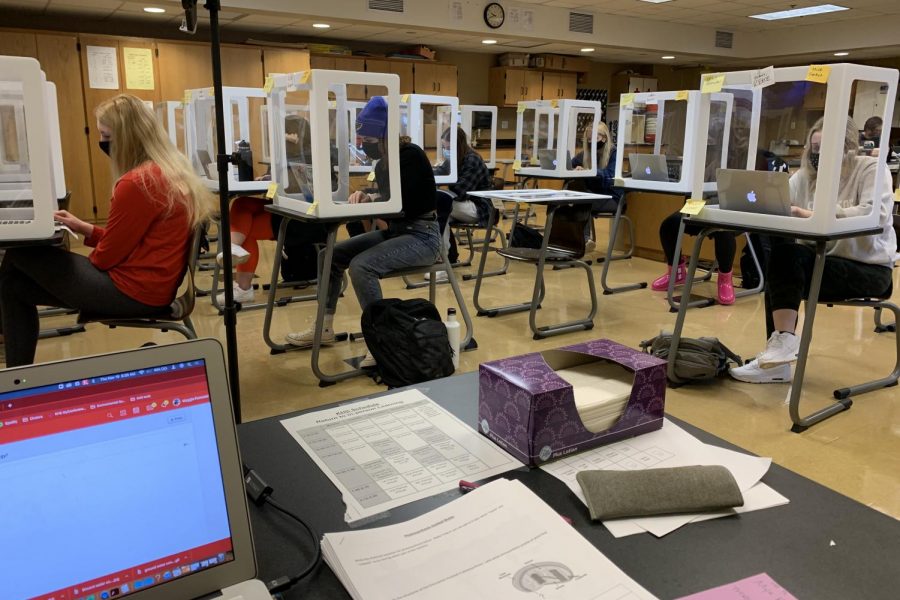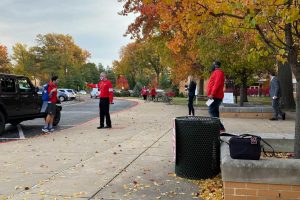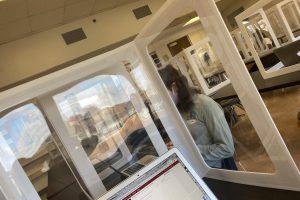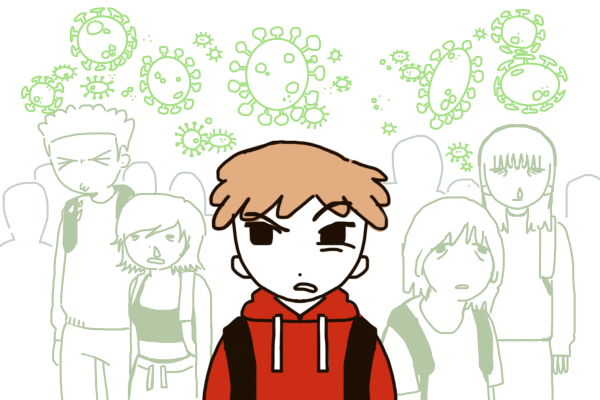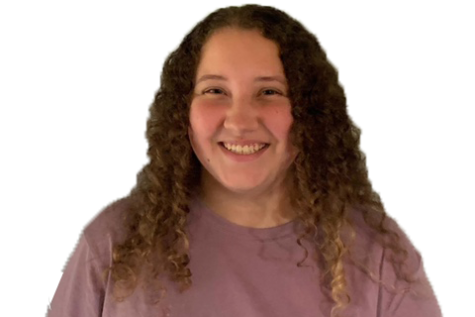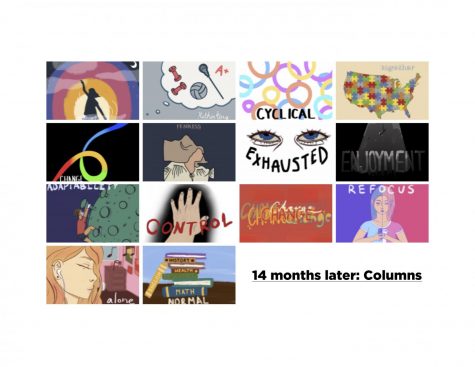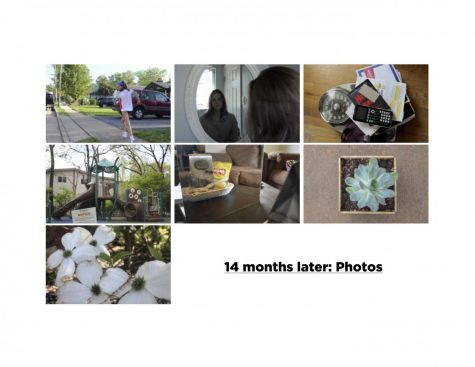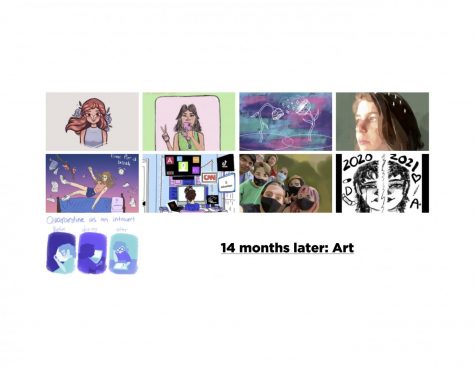Teachers share their in-person teaching experiences
Photo courtesy of Maggie Forrestal
In the first two weeks of in-person learning, virtual and in-person teachers came across issues ranging from virtual students not getting the focus they need, to adjusting their lessons to the new schedule.
It has been three weeks since students and teachers returned to KHS for in-person learning. As of Nov. 23, 1,090 students are in-person, 610 opted for virtual, and 106 are in quarantine (note: these numbers change daily). As of Nov. 25, 111 teachers (not including special education staff) are in-person, 8 teachers are virtual, and 8 teachers are teaching virtually while in quarantine. In the first three weeks of in-person learning, virtual and in-person teachers came across issues ranging from virtual students not getting the focus they need, to adjusting their lessons to the new schedule.
Every student had the choice of continuing to learn virtually or going back to in-person learning. For teachers, it was a little more complicated. According to Edrin Chen, Chinese teacher, if teachers wanted to continue teaching virtually, they had to have a valid medical reason. Chen was approved to teach virtually for the rest of the semester due to underlying health conditions. She said that she provided a doctor’s note to human resources at KHS, then awaited their decision.
“I am high-risk, so I talked to the [Kirkwood National Education Association (KNEA)],” Chen said. “I reached out to the KNEA and then they recommended that there is an option [of] steps that I can take to see if I get approved [to teach virtually] from human resources, which later on I did [get approved], so I was very grateful that I was able to continue to teach virtually.”
Teachers who are educating their students through Zoom for the remainder of the semester have in-person substitutes in their classrooms to supervise their students. Chen said she is very grateful for her substitute, Avery Lux.
““[I] have a really nice substitute in the classroom helping me make sure [the] kids in-person are doing what they are supposed to do,” Chen said. “I communicate with Mrs. Lux daily, and at the end of the day we talk about the situations that she might see in the class [that I cannot see] so we were able to quickly adjust [to the new learning situation].”
Lux was reached out to by KSD because they needed many substitute teachers for classrooms. Lux ended up with Chen’s class, and said she mostly has to make sure the Zoom is functioning properly and that the students are following social distancing rules.
“I have to make sure that the Zoom is working well, and that all the students can see and hear her properly,” Lux said. “I assist her with whatever she needs, so if she needs me to write something on the board for students in class, or to repeat questions if she’s having trouble hearing. I of course [am] making sure everyone is following the safety protocols.”
Teachers normally have long-term substitutes to teach their classes if they had to go on, for example, maternity leave. Maggie Forrestal, Mandy Melton’s long-term Honors Biology substitute and Environmental Sustainability teacher, has been teaching Honors Biology since Melton went on maternity leave. She said the technology aspect of teaching virtually was difficult during the first few months.
“[Teaching virtually] was intimidating for me personally because this was my first [time as a] long-term substitute. It was kind of my first solo venture into teaching by myself, so I was kind of new to the technology coming into it,” Forrestal said. “Initially for me, figuring out how to make the breakout rooms and putting [students] in the right places [in the breakout rooms was challenging], and now that just seems silly because it’s so simple. I think just having that multitask component is a challenge.”
Forrestal said now that she is in-person teaching, she is having difficulty multitasking. She said it is funny that she thought teaching was difficult while everyone was virtual, but it was actually much easier than it is now.
“There is more multitasking to do [in-person],” Forrestal said. “I have to draw with my finger on an iPad and that’s a totally separate device that I have to log into Zoom separately and then display it in the right place. It’s just a lot more to think about on the spot.”
Science classes are not currently doing any hands-on labs, which Forrestal said takes the fun out of learning. However, for some classes, most of the learning requires hands-on work. Amanda Roberts teaches Foods, Fashion and Construction and Child Development, and said strictly following social distancing rules would not work in her classes.
“I told Dr. Havener I cannot be three feet from a student and help them,” Roberts said. “I can’t do that in my [Foods] classes [and] I can’t do that in my [Fashion and Construction] classes.”
The Foods classes are using the 65-minute class periods to cook and work on assignments. Roberts said it is difficult to plan lessons for the 25-minute afternoon classes because it is simply not enough time.
“I [would see] my kids [for about] two hour-and-a-half class periods a week, so [I lost about 50-60 minutes of class time a week. I had to determine what I felt was necessary and what I could let go of because I was losing a class period,” Roberts said. “Then they moved us to this [new] schedule and I went to 65-minute class periods twice a week, 25 [and 40] minute [periods] once a week. I’m not going to have my kids do their prep work at school and then cook at home in 25 minutes.”
Along with adjusting her lessons to the new schedule, Roberts said she is also having a difficult time helping both her in-person and virtual students during class. She said with all the multitasking she has to do in class, all she can do is trust that her students understand the material.
“I think the kids at home are not getting what they deserve, but it’s also because I’m being pulled [in] so many directions at one time I don’t know how to do it better,” Roberts said. “I hope that they can do [the assignments]. They’re not getting as much instruction or direction as they were when we were all virtual and I feel like those are the kids who are kind of being left behind a little bit.”
While many in-person teachers are having a difficult time interacting with virtual students, virtual teachers are having the opposite problem. Chen said it can be difficult to hear the students in the back of the classroom.
“I have a really large class, and because how I set up the classroom they have to be three feet apart, it’s really hard for me to hear the last row of kids,” Chen said. “I don’t want them to feel like I forgot about them so I constantly will pick the kids from the back seat to answer some questions, even though I may not hear [them] clearly.”
Chen said above everything else, she misses her students the most. She said the lack of face-to-face interaction she gets with her students has been one of the hardest aspects of virtual teaching.
“I miss the interaction. I am missing the kids everyday,” Chen said. “The instant feedback that I receive from face-to-face [interaction] I miss the most. I’m hoping that pretty soon that we are able to get back to [normal life] and that everyone can be in the classroom setting where everyone feels safe.”
According to Forrestal, teaching in-person has not changed the fact she feels lonely. She said she is constantly in her classroom by herself, which is isolating for her.
“I eat lunch in my room by myself, I’m in [the classroom] by myself and it’s very isolating,” Forrestal said. “I miss that social time with my teachers, I miss walking down the hallway through a crowd of kids [and] I miss being able to see people’s faces. It’s weird because we can’t see smiles, we can’t read lips. It’s amazing how much I rely on that, but it’s mainly the community that I miss. I miss lunchtime sitting with my co-workers and having that down time, we don’t [get to] do that anymore and it’s kind of sad.”
Your donation will support the student journalists of Kirkwood High School. Your contribution will allow us to purchase equipment and cover our annual website hosting costs.

she/her
Hobbies and Interests: writing, baking, hanging out with friends, bullet journaling, watching movies
Favorite song: good 4 u by Olivia Rodrigo
Favorite...


